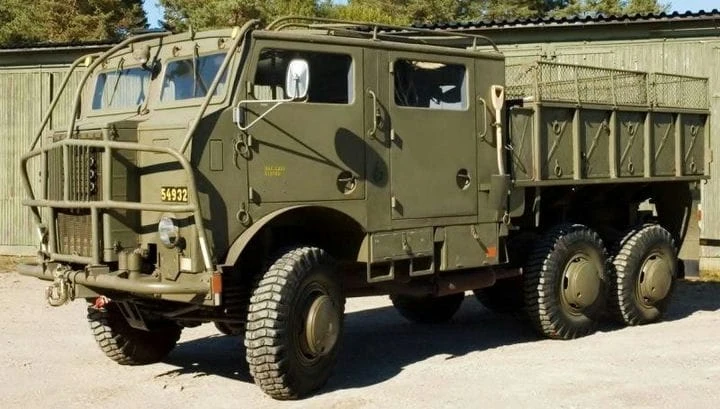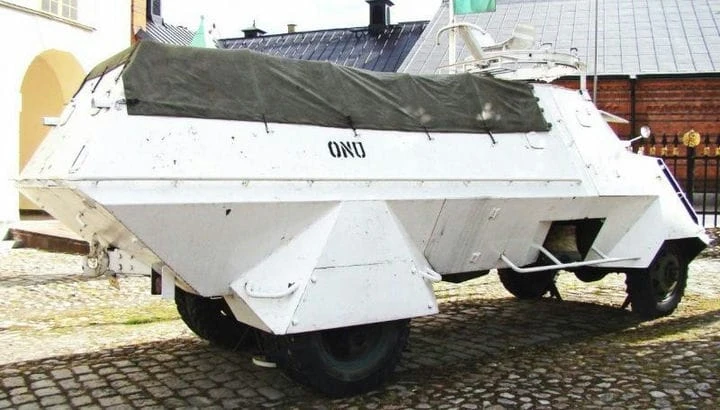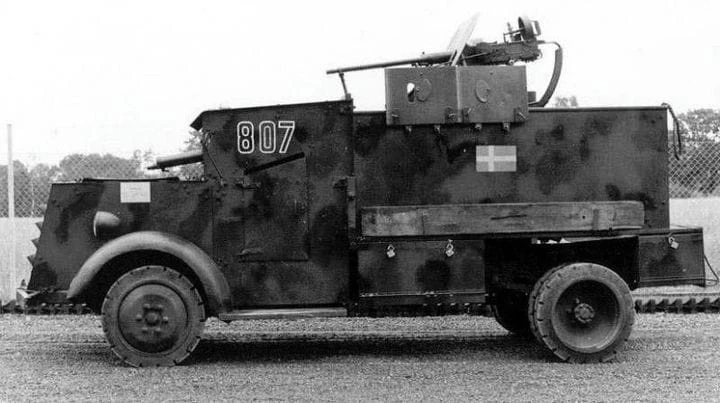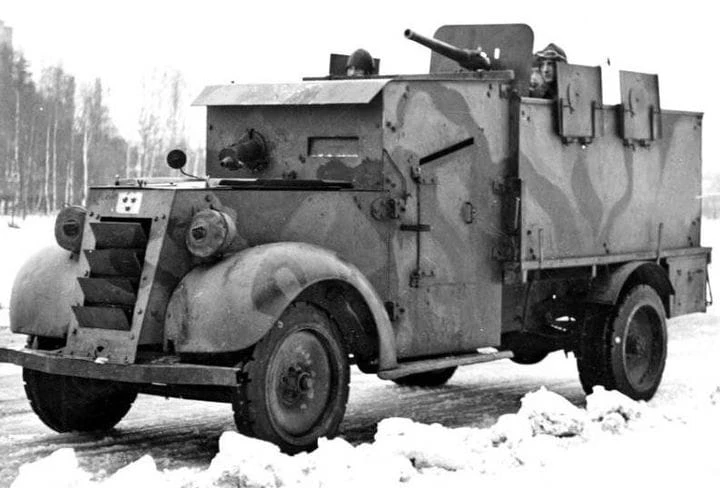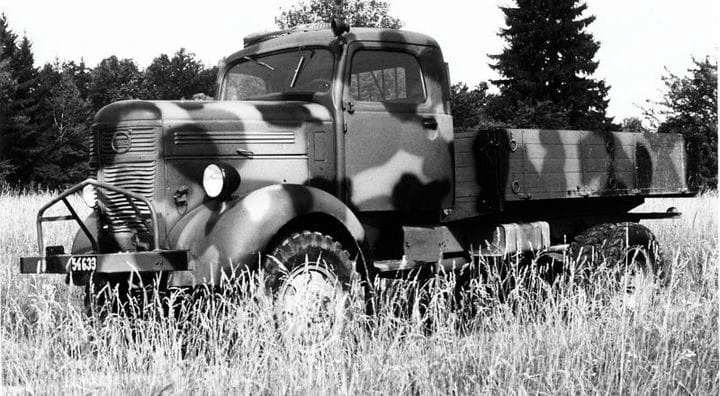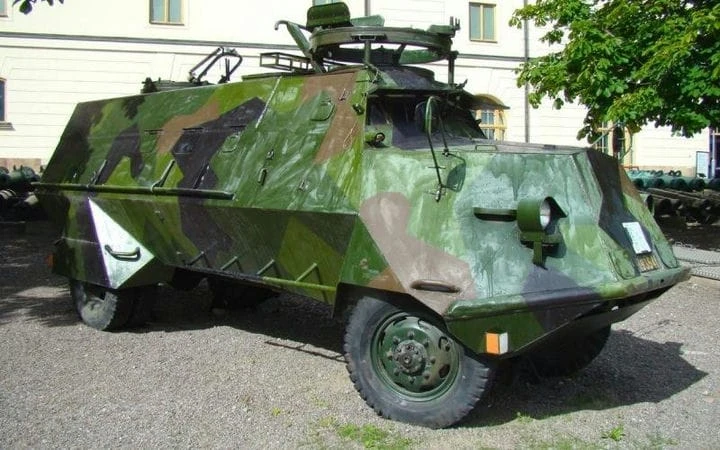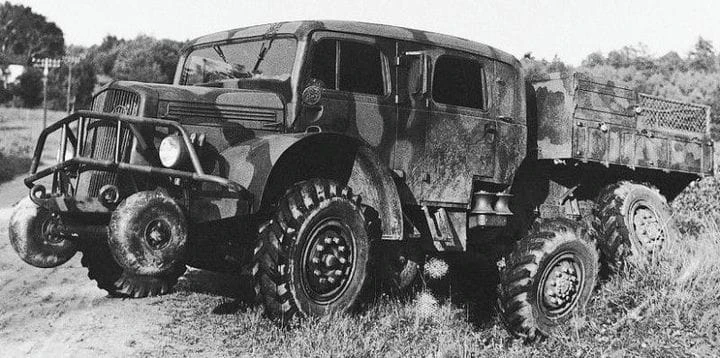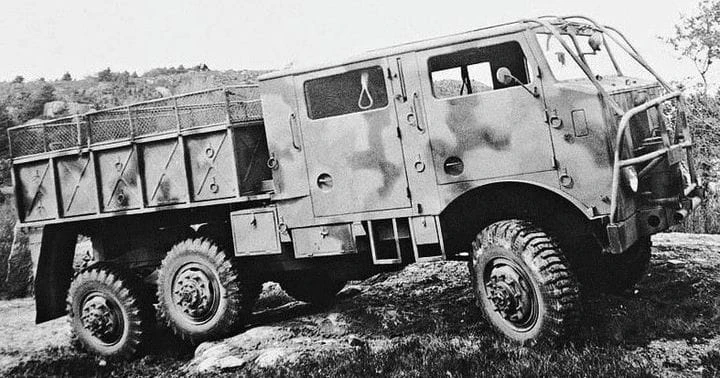Combat Volvo and not only: military equipment of neutral Sweden during the Second World War
With the outbreak of World War II, most large and small states on different continents were involved in bloody battles and the creation of their own armed forces, saturated with powerful military equipment. At the same time, few people know that within Western Europe there were two fairly powerful peace-loving states that traditionally remained neutral and were not part of military blocs: Royal Sweden and the Swiss Confederation.
Army vehicles of neutral Sweden
Both in peacetime and in wartime, the Swedish car industry produced simple primitive trucks and armored cars that did not differ in attractive forms and advanced solutions at all. At the same time, despite the state neutrality declared in February 1940, Sweden, having let Nazi troops through its territory, produced 40-mm Bofors anti-aircraft guns of its own design.
Military Products Scania-Vabis
Scania-Vabis (later Scania) has the longest experience in building military equipment. For the National Army, since 1940, he has been producing standard rear wheel drive trucks with a 3.5 ton hood and top cab trucks with a 140 hp petrol engine and a single wheelbase of 3.8 meters. At the height of the war for the Royal Air Force, the company assembled the original Scania-Vabis TRM9 (4×2) model 8116 bus seat on a special three-ton chassis with all single wheels and antenna mounts on special roof racks where command posts and radio stations were placed to serve remote military and forest airfields. In 1943-45. 323 of these machines were assembled.
Yesterday and today at the command post of the airfield of the Swedish Air Force TRM9 in the back of an army bus LB38F. 1943
In 1942, the production of a serial military truck F11 (4×4) with a hood began with a new upper four-cylinder gasoline engine with a capacity of 115 forces, a simple cab and the same wheelbase (3.8 meters). The four-speed transmission can be all-wheel or rear-wheel only with an integrated mechanical winch and cable outlet on both sides of the vehicle.
The most common F11 truck of the Swedish army with all-wheel drive and a reinforced body. 1942-1944
Unusual Scania car carriers on a truck chassis
In 1942, an unexpected and unusual discovery by Swedish designers was the SKP (Scania Karosseri Pansar) multi-purpose armored vehicles for the delivery of 12-18 people, mounted on a modified three-ton Scania-Vabis F11-chassis. 0 (4×4). Several versions served with the Swedish border and police forces, local operations and the Swedish units of UN troops in Cyprus, Congo and so on. The hulls of these vehicles had a double cabin with side doors and a passage to the cargo compartment with an armored roof, a winch and a turret with machine guns of 7.62 or 7.92 mm caliber. As conceived by the developers, the V-shaped steel bottom shields were supposed to reflect the energy of the shock wave of land mines.
UPC military transporter based on Scania-Vabis F11-0, the design of which became the starting point for the creation of future combat vehicles. 1943
By the end of the war, improved and more comfortable SKPF transporters were being produced on the same wheelbase. 1960
These machines used 105 and 115 hp engines, conventional gearboxes, hydraulic brakes and three-ton winches. Their mass reached 8.5 tons, the maximum speed was 70 km / h. Until 1947, 252 of these machines were assembled in Sweden.
Volvo military products
The outbreak of World War II did not affect the activities of Volvo, which was born in the spring of 1927 and quietly continued to produce civilian cars and trucks. However, in 1940, the company began the preliminary development of military equipment in the hope that before the end of the war there would be no need to organize mass production of military equipment, from light “Swedish jeeps” to three-axle tractors.
The lightest of this lineup was the Volvo 911 TPV (4×4) commander's car with a fully enclosed body from the eight-seater PV802 taxi with a three-meter wheelbase. It was equipped with an 86 hp six-cylinder engine, a simple gearbox and reinforced tires, if necessary, snow chains. In 1944-46, 210 machines were built.
The first Swedish jeep is a Volvo 911 TPV command vehicle with a taxi body and 16-inch tires. 1943
In the 1930s, based on several types of serial Volvo trucks with Landsverk bodies and solid or pneumatic tires, the company assembled simplified semi-armored vehicles of the FM31 family with a crew of five to six people, 37-mm cannons in an open turret and a machine gun in frontal armor, designed for Swedish army. Until 1940, another 30 similar armored vehicles with 20- and 37-mm Bofors guns were assembled.
A pre-war LV83 armored personnel carrier with a 20 mm anti-aircraft gun on the roof and a machine gun in the cockpit. 1938
M31 light machine on LV81 chassis with 75 horsepower with a set of tools and solid tires in the transport position. 1937
Since 1942, under the leadership of engineer Hartelius, Volvo began to produce a new family of three-ton army trucks with a hood for the delivery of army supplies or 16-20 soldiers. Similar basic paramilitary versions TLV131, TLV140, TLV141 and TLV142 (4×4) differed in engine power (90 and 105 hp), hydraulic pneumatic brakes, hood shape, winch installation and two wheelbase options (3.8 and 4.1 m ). Some of them were produced before 1955, and the total number of trucks assembled reached 1000 units.
Second generation Volvo TLV142 military tractor with 105 hp petrol engine and crocodile skin hood. 1944
In the post-war years, these machines were repeatedly modernized and rebuilt until the early 1970s. Together with the SKP transporters, Volvo assembled its own VKP (Volvo Karosseri Pansar) armored vehicles on the TLV131 chassis. In total, Volvo produced 200 cars.
At the second final military stage, a more powerful version of the VKPF based on the TLV142 went into production.
The legendary trio of off-road tractors
During the war years, the secret area of heavy three-axle Volvo artillery tractors with a double cab was the most interesting.
In 1940-41, the enterprise produced 148 semi-automatic artillery tractors TVB (6×4) with a two-row eight-seat cab, a six-cylinder engine with a capacity of 128 hp, an original onboard transmission, a balanced single-wheel rear-wheel drive suspension and a 10-ton winch engine.
In 1942, a 10-ton (6 × 6) TVC cabover tractor with a double cab appeared, created under license from the Czechoslovak company koda. The power of its power plant increased to 135 forces, and the front wheels received an independent suspension and an individual cardan drive from the transfer case. In two years, we have assembled 168 TVC machines.
At the final stage of the war, Volvo built prototype tractors TVC2 and TVC3 with a new 180-horsepower engine. The first was equipped with a conventional five-speed gearbox, the second with a semi-automatic Wilson with a two-speed transfer case. The TVC3 version with a gross weight of 11 tons was equipped with a winch with a pulling force of 10 tf, which towed the heaviest weapons and damaged armored vehicles weighing up to 50 tons. 1944-45
